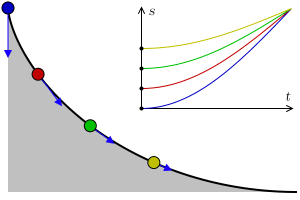In mathematics, integral equations are equations in which an unknown function appears under an integral sign. [1] In mathematical notation, integral equations may thus be expressed as being of the form:
Contents
- Classification and overview
- Linearity
- Location of the unknown equation
- Limits of Integration
- Homogeneity
- Regularity
- Integro-differential equations
- Volterra integral equations
- Uniqueness and existence theorems in 1D
- Volterra integral equations in R 2 {\displaystyle \mathbb {R} ^{2}}
- Uniqueness and existence theorems of Fredhom-Volterra equations
- Special Volterra equations
- Converting IVP to integral equations
- Power series solution for integral equations
- Numerical solution
- Integral equations as a generalization of eigenvalue equations
- Wiener–Hopf integral equations
- Hammerstein equations
- Applications
- See also
- Bibliography
- References
- Further reading
- External links
where is an integral operator acting on u. [1] Hence, integral equations may be viewed as the analog to differential equations where instead of the equation involving derivatives, the equation contains integrals. [1] A direct comparison can be seen with the mathematical form of the general integral equation above with the general form of a differential equation which may be expressed as follows:
where may be viewed as a differential operator of order i. [1] Due to this close connection between differential and integral equations, one can often convert between the two. [1] For example, one method of solving a boundary value problem is by converting the differential equation with its boundary conditions into an integral equation and solving the integral equation. [1] In addition, because one can convert between the two, differential equations in physics such as Maxwell's equations often have an analog integral and differential form. [2] See also, for example, Green's function and Fredholm theory.





















































































































